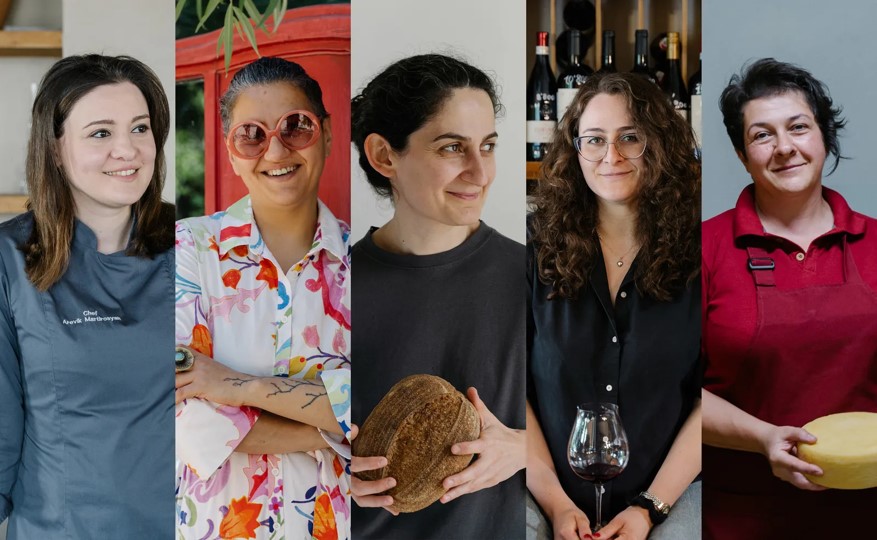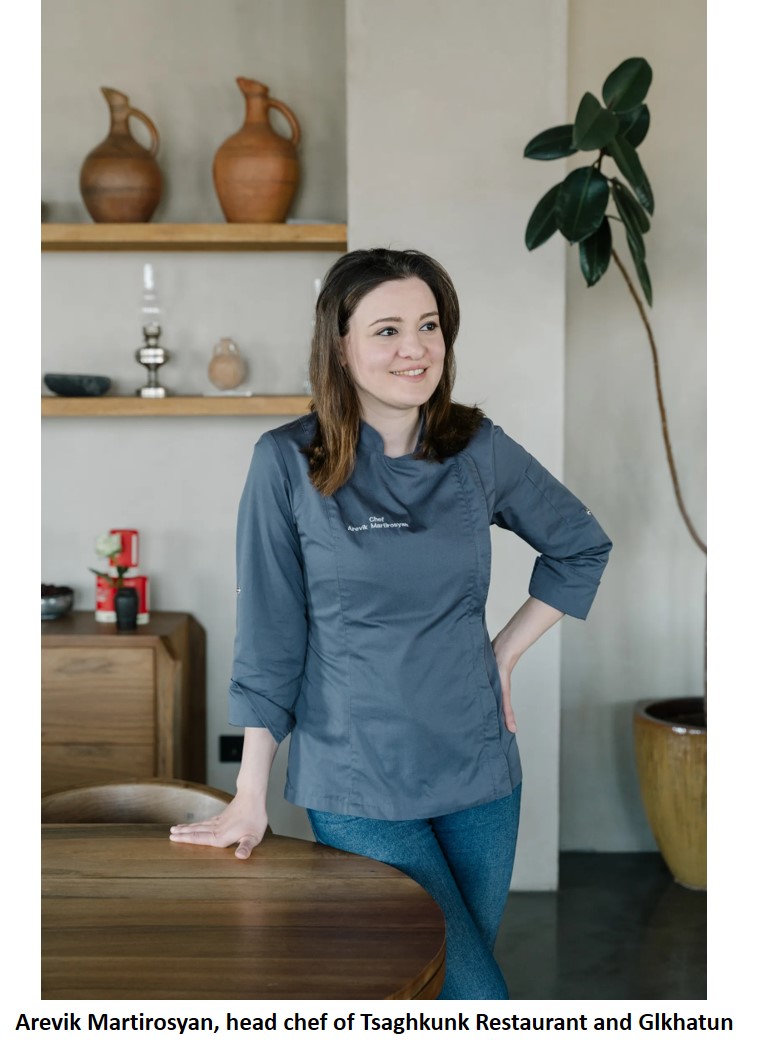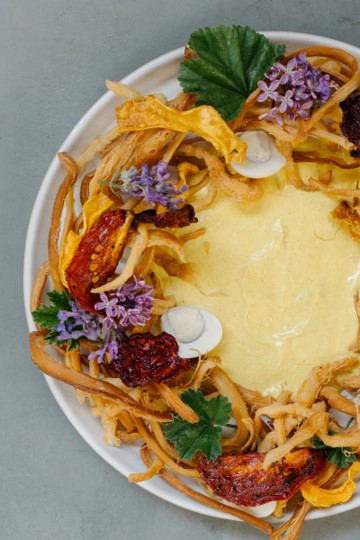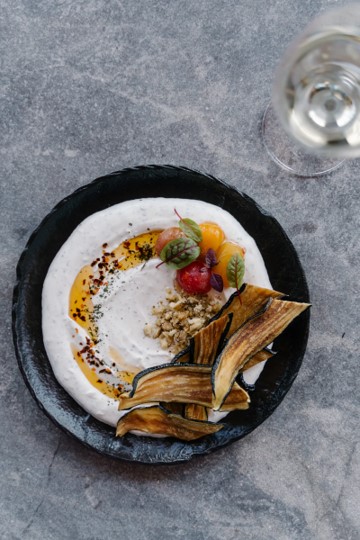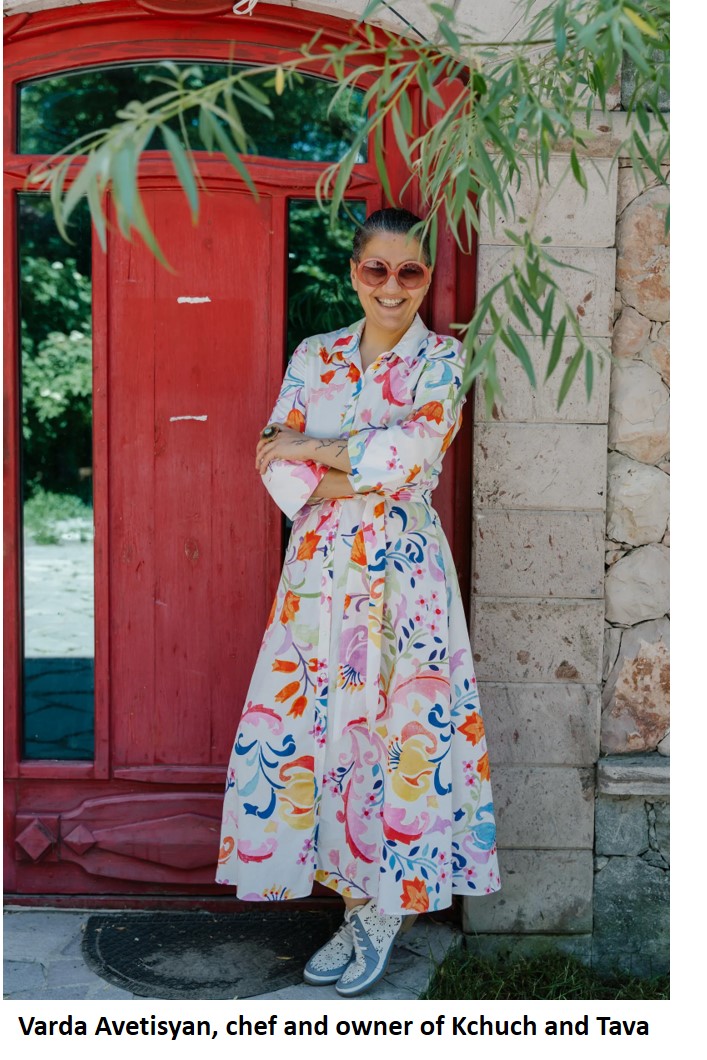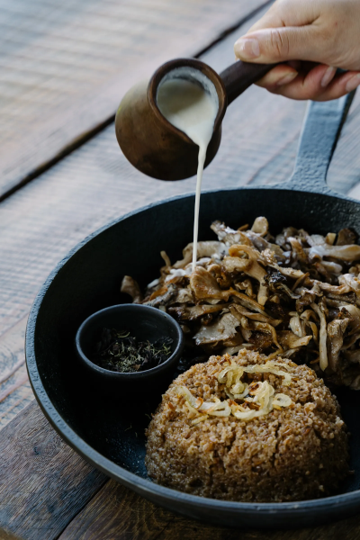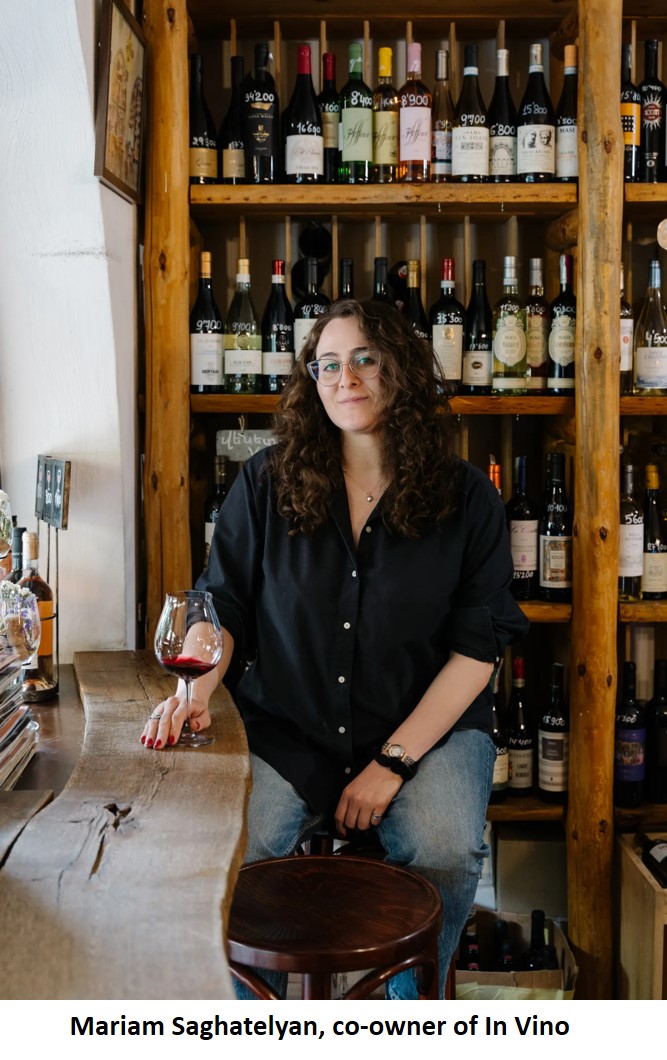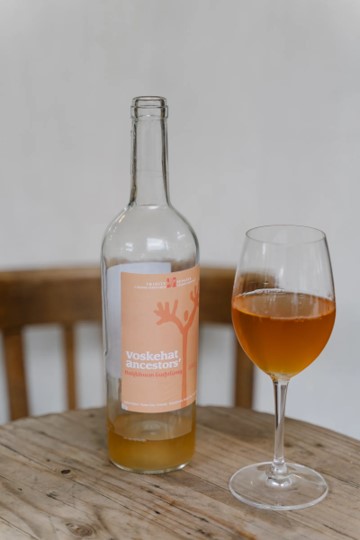Return
|
Ref ID: NAP2024/8877 | Posted On: 17-08-2024 | Updated on: 19-08-2024
|
|
Meet the Female Chefs Blazing a New Trail in Armenian Cuisine
With Georgian cuisine being all the rage in recent years (cue a boat-shaped adjaruli khachapuri bread oozing with cheese and picturesquely topped with a raw egg), neighboring Armenia and its food culture are on the rise among gourmets worldwide. The tiny country in the southern Caucasus—roughly the size of Hawaii and surrounded by Georgia, Turkey, Iran, and Azerbaijan—has every right to be extra cautious, given its troubled past and lingering tensions with some of its neighbors. And yet, Armenians welcome travelers with open arms, eager to meet each and every visitor who makes their way to them.
Armenia is known for its great hospitality: walk into any bakery and they’ll happily toss three extra loaves of bread in your bag as a gift; go hiking and you can't possibly refuse a spontaneous invitation to a khorovats, Armenian barbecue—signaled only by hand gestures—as you pass one of the many picnic areas. Expect a few shots of homemade vodka to toast family, friendship, and a happy future. No language skills needed, except the universal language of food.
From freshly baked lavash bread the size of a small tablecloth, to succulent flatbreads stuffed with up to 40 different herbs called jingalov hats, to buttery gata coffee cake, Armenian cuisine is a celebration of its ancient culture, rich heritage, and natural beauty. In spring, the country comes alive with flowering apricot trees and people flocking to the mountains—which boast a rich biodiversity—to pick herbs. Add to that more than 300 days of sunshine a year and 20 percent of the country covered by Lake Sevan, one of the world’s highest freshwater lakes, and you have some of the tastiest fruits and vegetables in the world.
As one of the oldest countries in the world, more and more chefs, makers, and producers are working to shape the country’s culinary future. While women have traditionally done the cooking in Armenian society, it’s female chefs like Arevik Martirosyan of Tsaghkunk Restaurant & Glkhatun who are gaining international recognition for reinventing Armenian cuisine with a modern twist. Armenia is also known as the cradle of wine—with the world’s first winery located in a cave in the south of the country called Areni-1—and Mariam Saghatelyan, co-owner of In Vino wine bar, is working with the best the country has to offer, including a growing number of natural wines.
Arevik Martirosyan, head chef of Tsaghkunk Restaurant and Glkhatun
Tsaghkunk Restaurant & Glkhatun is a destination restaurant in the truest sense of the word: Leaving the buzzing capital of Yerevan behind, you’ll spend an hour driving north through sweeping landscapes until you reach the tiny village of Tsaghkunk, at about 2000 meters above sea level, with its mountain panorama and passing flocks of sheep and cows grazing on the side of the road. It’s here that chef Arevik Martirosyan creates delicate dishes deeply rooted in tradition while reinventing them.
What was once a canteen for Soviet farm workers has become a haven for modern Armenian cuisine: Think wild sorrel with fruit lavash and walnuts, crispy fried chechil string cheese with buttermilk, or sig fish with sea buckthorn from nearby Lake Sevan. “The menu consists of traditional recipes that I interpret in my own way, but also classic Armenian dishes. For example, fish dolma—we have it in Armenian cuisine, but the sauce is my interpretation,” says Martirosyan. Next door, in the restaurant’s Glkhatun, one of the few remaining 11th-century stone houses with a tonir oven in the floor, the village’s two bakers, Gohar Gareginyan and Anna Yesayan, make fresh lavash to, at the same time, keep Armenia’s ancient culinary culture alive.
How does the Yerevan-trained chef find the balance between tradition and modernity? “I treat it with care. I add modern touches, but I use only local products.” Today, her farmer husband supplies the restaurant with organic and seasonal fruits, vegetables, grains, and legumes—which taste especially intense because of the altitude—and Tsaghkunk is involved in the “Gagarin Project,” an initiative to revitalize the region’s rural landscape. Tsaghkunk Restaurant first gained international attention when Mads Refslund, co-founder of the original Noma in Copenhagen, did a pop-up there. But it’s the progressive cuisine of Martirosyan and her team of local chefs, celebrating the best of Armenian produce and culture, that makes this place a must-visit in Armenia.
Varda Avetisyan, chef and owner of Kchuch and Tava
Often dubbed “the gastronomic capital of Armenia,” Dilijan is a small town in the national park of the same name in the north of the country. Here, Varda Avetisyan is the owner of acclaimed restaurants such as Kchuch and Tava. Born in Yerevan, she moved to Chicago for university, eventually fell in love with Dilijan, and came back. “For me, Dilijan is the most diverse city in Armenia. Because we have the international UWC Dilijan College here and a beautiful community of artists and creatives who have left the busy city life behind,” she says. At her restaurants, Avetisyan has made it her mission to revive the culture of cooking in the brick ovens typical of northern Armenia, but in a new way.
On the menu: Seasonal produce from the forests around Dilijan, such as the famous wild mushrooms, cooked in traditional clay pots and cast-iron pans. At Tava, they’re then paired with khasil, “a very old and simple Armenian dish,” made of roasted ground wheat cooked with caramelized onions and clarified butter and choratan, dried salted yogurt that is mixed again with water. “We cook it with a little twist, a little more spiced and toasted in the brick oven.”
But that’s not all: Avetisyan also takes on the beloved gata pie, traditionally filled with a mixture of butter, sugar, and sometimes nuts, and often with elaborate decorations. Instead, Avetisyan’s creative alternative is open-faced, so it’s crispy on top, and comes in such unique combinations as blueberry and lemon, or cheese and tarragon, one of the many herbs Armenians love to cook with. “Because for me, food is that: it has the local, the traditional, the old, and also the new and creative, bringing together different cultures and different cuisines,” says Avetisyan.
Ani Haroutiunian, founder of Arm Food Lab and co-owner of Ootelie Bakery
With Dilijan’s stunning natural surroundings as a backdrop, Ani Haroutiunian opened Arm Food Lab in 2019, a studio space where she experiments with local ingredients. “But not just because it’s a current trend in gastronomy,” she explains. “I have a question for myself as an Armenian, and for all of us in Armenia: what are we going to eat when we’re isolated from the world, for example?” An art historian turned forager, Haroutiunian explores her country’s culinary heritage as well as its edible ecosystems, as Armenia is one of the most biodiverse regions on Earth. “I want to understand what Armenians ate, how they ate, what recipes and what kind of ingredients they used”, she says.
Visitors can learn more about Armenian food culture in her test kitchen: On the table are such intriguing dishes as roasted eggplant with mountain herbs and fermented Armenian hot peppers on top, and sindrik, Solomon’s seal, which is poisonous raw but becomes a tender, bitter green when blanched and drizzled with strawberry vinegar.
Always exploring, Haroutiunian also began making bread from heirloom grains in 2015, eventually kickstarting the sourdough movement in Armenia. In 2021, She opened Ootelie Bakery in Dilijan, where she makes her own flour and sources her Armenian wheat, rye, emmer wheat, and seeds from around Tsaghkunk. Her latest project? A bread map of Armenia, where she will include all the unique bread varieties, grains, oven types, and techniques of the most famous bakers from each region.
Mariam Saghatelyan, co-owner of In Vino
When In Vino, Yerevan’s very first wine bar, opened in 2012, it launched a movement, with its sister restaurant Tapastan opening next door shortly thereafter, and eventually changing the name of an entire street—Saryan Street, now affectionately known simply as “wine street.” It’s also the site of Yerevan’s biggest event of the year, the Yerevan Wine Days, take place. “When we opened, we had only about 10 drinkable Armenian wines. Now we have over 600,” says Mariam Saghatelyan, one of In Vino’s co-owners. “Nobody drank wine, only vodka”.
Despite Armenia’s more than 6,000-year history of winemaking, many vineyards were privatized after the collapse of the Soviet Union because people needed wheat and vegetables to survive. “Now there’s a steady kind of movement, it’s growing little by little.” A graduate of Armenia's EVN Wine Academy, Saghatelyan also teaches about wine besides hosting tastings at the shop. In Vino also makes its own wine, Trinity Canyon Vineyards, in the Vayots Dzor highlands, the first in Armenia to be certified organic—and just down the road from the original Areni-1 wine cave.
Originally born in California to Armenian parents, she now can’t imagine living anywhere else. “Yerevan is like a dough you can shape,” Saghatelyan says of the capital’s food scene. Just recently, In Vino opened its newest project, 6100, this time on the outskirts of Yerevan.
Marina Shaqaryan-Mikayelyan, head cheesemaker at Mikayelyan Family Farm
The Mikayelyan Family Farm was born after its co-founder, Marina Shaqaryan-Mikayelyan, began longing for a simpler life outside of the capital—and now, in the small village of Artsvakar just off Lake Sevan, Shaqaryan-Mikayelyan is the head cheesemaker of Armenia’s first (and most prominent) artisan cheese producer. There’s cheese wrapped in vine leaves, brined in pomegranate syrup, and even a two-year-old variety that’s carefully rubbed with cognac each day from the world-renowned Ararat Brandy every day. “She knows every cheese wheel by its face,” says her husband Arman, with whom she runs the business.
While Armenia is primarily known for just two types of cheese—Lori and Chanakh—Shaqaryan-Mikayelyan wanted to do something different. Having previously worked as a biochemist, she now translates her passion for science into her cheeses, having gained her knowledge from books and a lot of experimentation. The current collection includes 10 different kinds of cheeses; the number of experiments that have gone wrong, however, totals more than 50. But she’s not afraid of failure: “It's all part of the process.” Arman adds. “Failure happens more often than a good result, but we know that we must never stop.”
The whole family is involved, obtaining the milk from their relatives’ cows in the mountains. The couple doesn’t export their cheese, and it’s only available at selected restaurants in Yerevan and during tours of their farm. Their visitors are mostly travelers interested in food and wine. “We always joke that we wanted to escape the city—and now the city is coming to us.”



